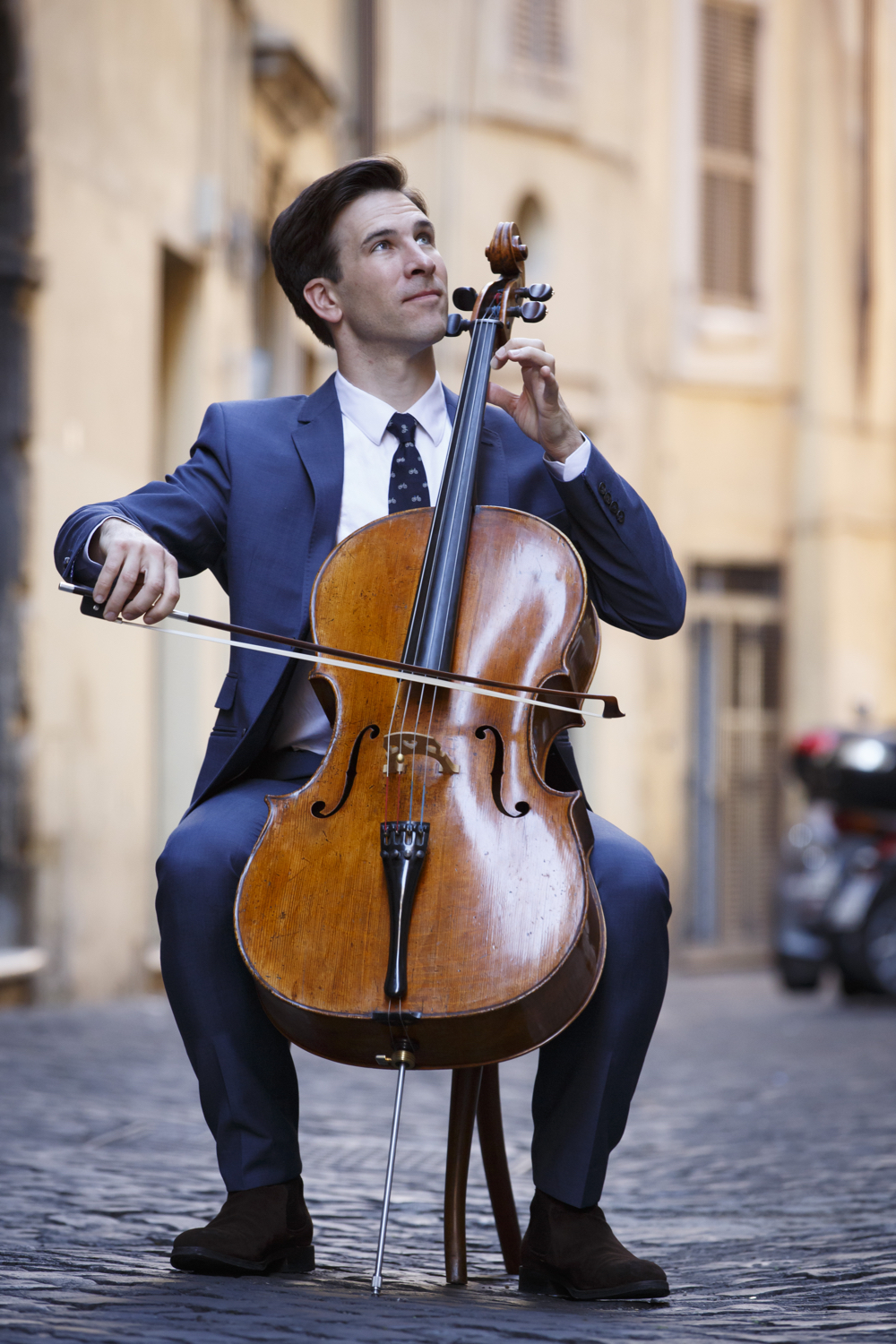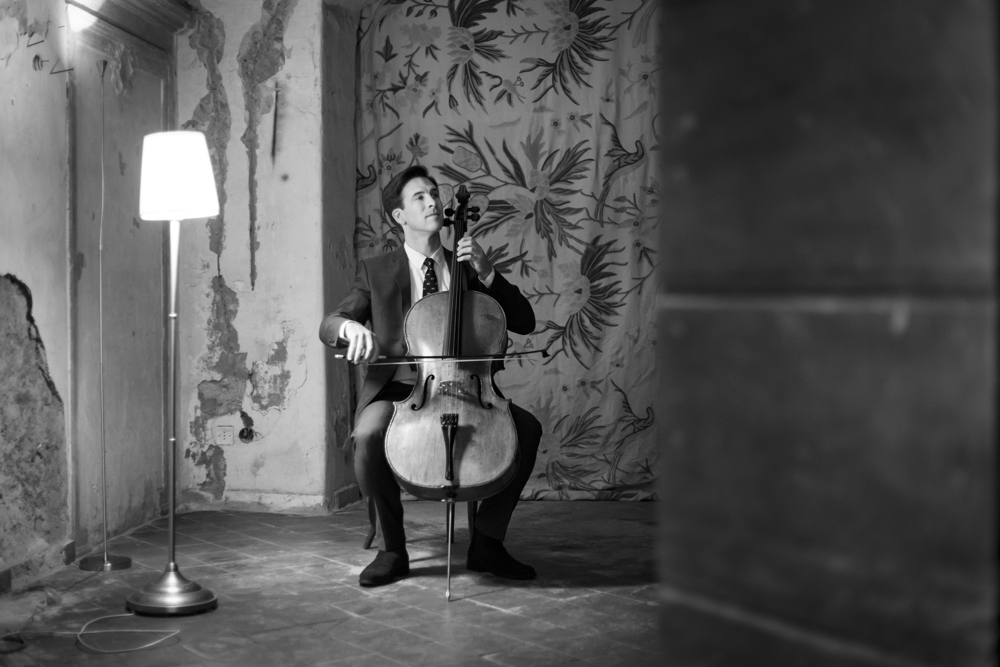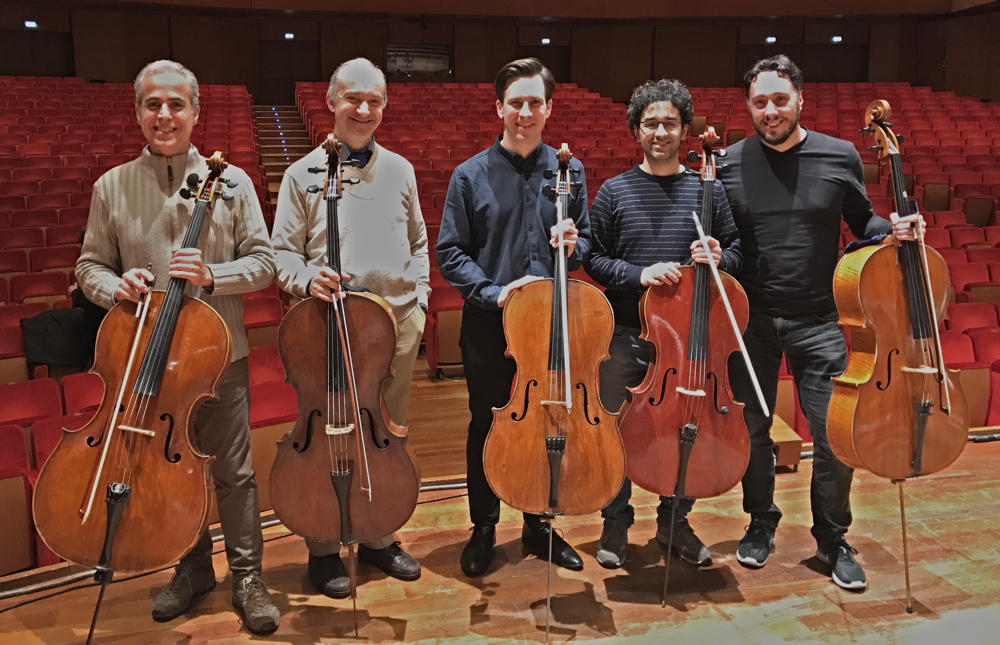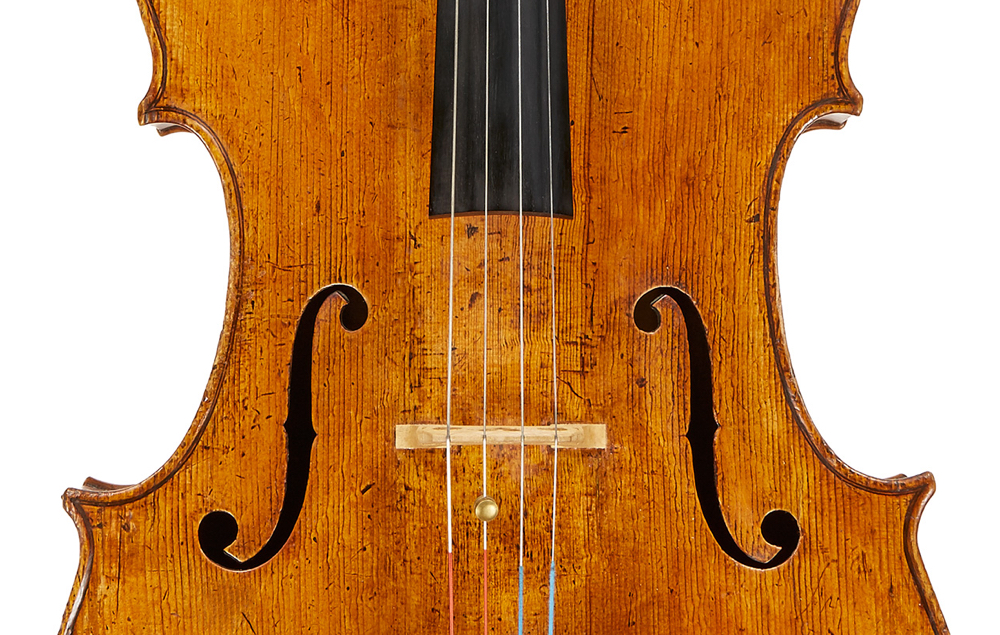This project has been celebratory,’ says Guy Johnston of Tecchler300, which has seen him mark the 300th anniversary of his c. 1714 David Tecchler cello with a musical pilgrimage to the instrument’s birthplace in Rome. The Tecchler was bought for Johnston six years ago by a group of sponsors after a long search for a new instrument. ‘To help mark this milestone, I wanted to take the cello home, to celebrate it and thank all the people who have supported me through it,’ he explains.
The idea was born in 2013 when Johnston was given some money by a sponsor, who asked what he would like to do with it. ‘So I said, why don’t we commission three works for the cello’s tricentenary year?’

Guy Johnston performs in the Via dei Leutari, outside the old Tecchler workshop. Photo: Musacchio & Ianniello
Johnston chose three composers – David Matthews, Mark Simpson and Charlotte Bray – for the commissions. ‘I asked them all to think of the role of the cello over the past 300 years and just let their imagination run wild.’
The resulting commissions are all very different. Johnston describes Matthews’s Ein Celloleben as ‘inspired by Strauss’s Ein Heldenleben but with the cello as the hero, and it has quotes from cello works over the past 300 years. It’s a celebratory piece.’ By contrast, Simpson’s Un Regalo (A Gift) is ‘very serious, intense and incredibly virtuosic – one of the hardest pieces I think I’ve ever played!’
Bray’s work, Perseus, was inspired by the discovery of a singing black hole in a distant cluster of galaxies named the Perseus Cluster. ‘She incorporates the structure of the piece around Tecchler’s name, which was an inspired idea,’ says Johnston. ‘It’s been really fascinating how they’ve responded to the idea in different ways.’
With his three works commissioned, Johnston wondered how best to programme them. ‘And then the BBC got in touch and suggested we record the commissions, and the King’s College label decided it would be nice to have alumni [Johnston was a chorister at King’s College Cambridge] coming back to King’s to do a recording, so they helped facilitate the funds and coordinate that part, so the stars really all aligned.’
‘It was amazing to have the instrument back in Rome and wonder when it had last been there.’
Johnston decided to include a cello work from each century on the CD, using different venues. After recording the three commissions at Wigmore Hall and Serenity by Ola Gjeilo at King’s College Chapel, Johnston went to Hatfield House, where he runs a chamber music festival, to record the Beethoven ‘Ghost’ Piano Trio with his brother Magnus and pianist Tom Poster. He also used the Royal Academy of Music to record the Sonata for Two Cellos by Jean-Baptiste Barrière (1707–1747), the work closest to the date of his cello on the CD. His partner for the Barrière was the young cellist Sheku Kanneh-Mason, who for the occasion was lent another Tecchler cello belonging to a supporter of the project. ‘It was very special as it felt like the cellos were two long-lost friends getting back together. We had great fun recording it and in the repeats we would swap parts,’ says Johnston.
The final work on the disc, Respighi’s Adagio con Variazioni, was recorded in Rome. The idea for the Roman part of the project came into being while the recording was in discussion, explains Johnston. ‘As things evolved, I thought wouldn’t it be great to get to Rome and discover the path of Tecchler and the great makers that were in Rome.’
One of Tecchler’s workshops is known to have been located at 16 via dei Leutari, so Johnston asked a friend who was on holiday in Rome to visit the site, which is today a garage. ‘She tried and there was no one there,’ he recounts, ‘but a man saw her taking pictures of the building and asked if he could help. He didn’t know any more about it, but after they chatted he gave her directions to a good place for coffee and about ten minutes later, when she was in the cafe, he came in with the owner of the building. She talked to him about the Tecchler connection and he was thrilled – he even talked about restoring the garage into a space where people could come and see it.’

Johnston inside the old Tecchler workshop – now a garage. Photo: Musacchio & Ianniello
Johnston was also put in touch with the Orchestra of the Accademia di Santa Cecilia, who agreed to record the Respighi with him. ‘This was something that grew out of a very small idea and it was really fun to see it all evolving. We were still raising the funds to make it happen and every time we got a bit more money we were able to add another string player to the orchestra.’
The trip to Rome finally took place in October 2016, when Johnston was joined by a group of 25 supporters in the city for a mix of music and sightseeing. He gave a private concert in the music room of the Palazzo Pamphilj along with friends and musicians from the Accademia di Santa Cecilia and on the final day he performed the first three Bach Suites, written around the same time that the Tecchler cello was made, in the Oratorio del Gonfalone. The group also visited the site of the old Tecchler workshop.
‘It was a spiritual experience taking the cello home,’ says Johnston. ‘I stayed in an apartment above the garage where Tecchler had worked, and we had a gathering in the old workshop itself. It was really dreamy sharing these moments with friends and supporters.’ Johnston performed some Rossini in the garage itself in honour of the composer, who lived almost opposite the workshop during the 19th century.
‘Through this project I was asking myself questions about the history of instruments and their makers but also why did I choose the cello, where am I now and where am I going next?’
‘It helped me to understand Tecchler’s journey as well,’ says Johnston, ‘because of course he started out in Füssen. When he arrived in Rome he was making lutes and gradually moved into making bowed stringed instruments. At that time viol and gamba players were being pushed to one side and the bass line was evolving – it was a real junction in music with the beginning of the modern cello. It was amazing to have the instrument back in Rome and wonder when it had last been there. Being there and soaking up the atmosphere and just imagining that time when the city would have been bustling with new craftsmanship and the demand for these new cellos – it really put the whole thing into context.’

Johnston with the cellists of the Accademia di Santa Cecilia in Rome
The experience led to some soul searching for Johnston himself. ‘I feel like I’ve gone back not just to the cello’s roots but to my roots as well,’ he reflects. ‘One of things you don’t appreciate when you’re studying is what it takes to maintain the life of a musician. In order to make things happen it’s kind of relentless, constantly asking people for help. So through this project I was asking myself questions about the history of instruments and their makers but also why did I choose the cello, where am I now and where am I going next?’
And has the Rome trip given him some answers to those questions? ‘Yes definitely – as a soloist a lot of your work is in isolation and I loved the process of getting to know people and the passion that came from the people who were involved. And I wanted to share where I am at this stage of my career – it’s a funny time, your mid-30s. You’ve had all your early successes and you realise that this is a marathon, you’ve got to keep your passion going through different projects. I think having some kind of narrative that you can share with an audience creates a deeper experience overall. And we had such a good time that we repeated the whole experience with different guests in January!’
The first preview track from ‘Tecchler’s cello – a journey from Cambridge to Rome’ is released on 5 May, with the full CD available on 8 September 2017.
Further reading: Jason Price gives a detailed examination of the cello.
Guy Johnston on his c. 1714 Tecchler cello
My Tecchler has been cut down but it’s still quite wide. The f-holes are particularly wide apart and close to the edges. It has a very clear sound and the depth down in the bass registers is wonderful. I think it’s got endless quality. People are always asking what it is, which I take as a compliment.
I’ve just put Pirastro Eudoxa gut strings on it, which is fascinating. I can’t believe I haven’t done it sooner! With metal strings to an extent you have to compensate – you have to make the sound in a certain way that is not altogether natural and you have to colour the sound with the vibrato. But with gut strings I find there’s already a colour to the sound without you having to make so much of it, and the minute you try to force or do anything that’s unnatural it tells you, so I’m learning a lot from that. I find you have to be in good shape technically in order for the gut strings to speak – if your bow isn’t aligned properly when you’re crossing the strings, the string will squeak.

The f-holes are set very wide apart on the body
It does take a while to adjust – it’s taken me a whole week to get the instrument in tune as the strings are stretching. I do have a raw gut A but I haven’t tried it yet – that’s a whole new world!
I’m a bit of a cello nerd and I love the geeky side of set up. When I was a student with Steven Doane he used to get me to take my cello to Rene Morel in New York to be adjusted. Morel would say that the point he knew that the post was in the right place was when his hairs stood up on end – he would come along and show you the hairs standing up on his arm. It’s almost like going to a therapist, having your instrument adjusted. But hearing that tweak of the soundpost being moved, that’s like the dentist!